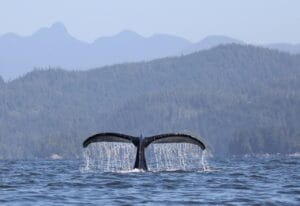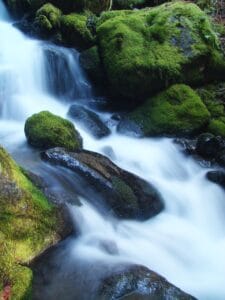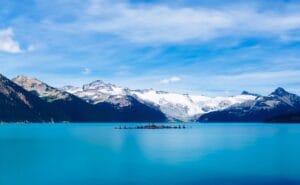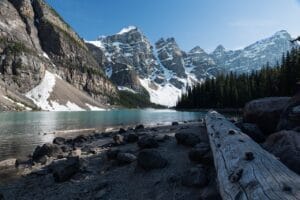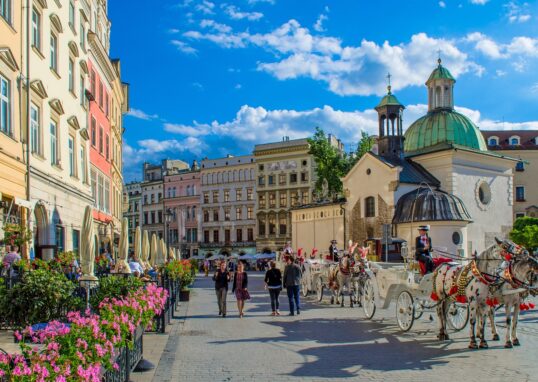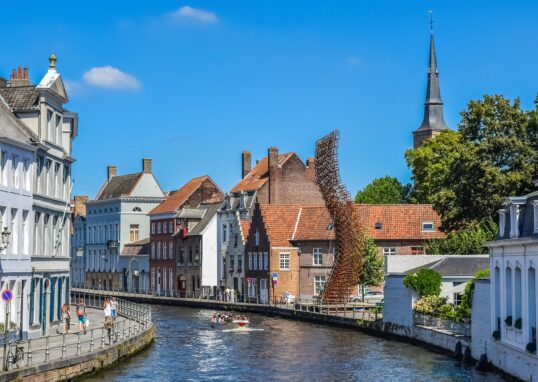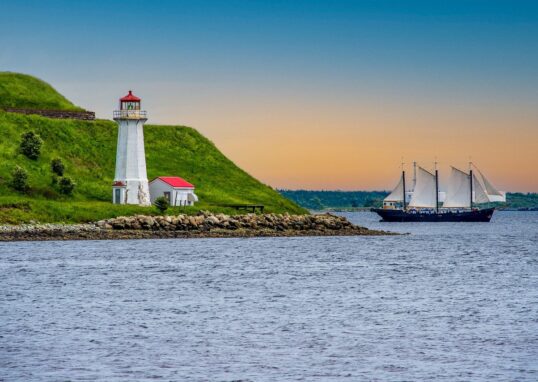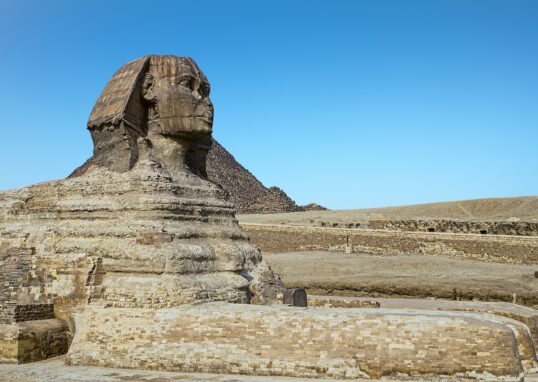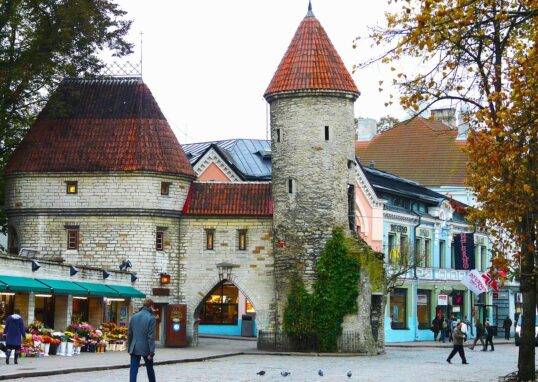
Anticosti Island: The Hidden Jewel of the Gulf of St. Lawrence
Anticosti Island is one of the most fascinating and lesser-known islands in Canada. It is located at the mouth of the Gulf of St. Lawrence, in the province of Quebec. The island is large, wild, and full of natural treasures. It is described as a forgotten paradise by many travelers. Some even claim that it is a world unto itself. It possesses a mix of rugged cliffs, unlimited forests, long rivers, and magnificent waterfalls. It is untouched. It is remote, peaceful, and quiet. Not many people know about Anticosti. However, it holds some of the most opulent natural wealth in North America. Here in this guide, we are going to talk about Anticosti in detail. We will cover its history, landscapes, wildlife, and culture. We will also cover the places near it. This will provide you with an idea of why Anticosti is so special.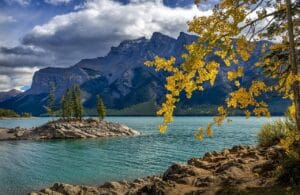
Location and Geography
Anticosti is a large island in the Gulf of St. Lawrence. It is about 222 kilometers in length and about 56 kilometers in width at its widest point. With an area of more than 7,900 square kilometers, it is bigger than Prince Edward Island. The island is configured dramatically. Its north coast faces the open waters of the Gulf. The south coast faces the Quebec mainland. In both directions, the sea is wild. The island rises with steep cliffs, especially along the north coast. These cliffs create a high wall that can be seen from a distance. In the island, land is covered with boreal forest. Caves, valleys, rivers, and hills shape the landscape. Limestone and erosion shape the landscape. Millions of years of water carved out deep canyons and spectacular rock formations. This unique geology also permineralized remains. In fact, Anticosti is considered one of the world’s best fossil sites.
History of Anticosti
Early Indigenous Presence
Well before the arrival of Europeans, Indigenous people navigated the Gulf of St. Lawrence. There is evidence that First Nations peoples came to Anticosti to hunt and fish. They did not necessarily stay all year round but were familiar with the resources of the island.
European Exploration
Jacques Cartier, a French explorer, arrived at Anticosti in 1534. He named it “Isle de l’Assomption.” The island changed names various times after that. At one point, it was called “Isle d’Anticosti,” which stuck. The island was an important reference point for vessels traveling through the Gulf. However, the waters around Anticosti were dangerous. Storms, fog, and strong currents made navigation risky. Many ships were wrecked on its rocky shores. Over 400 shipwrecks occurred in the area around Anticosti over the centuries. Because of this, it was sometimes called the “Graveyard of the Gulf.”
Settlement and Ownership
The island was French in the 17th and 18th centuries. After the British took Quebec in 1763, it became British. The island was extremely thinly populated for many years. There were a few fishing and hunting camps but no large communities. A French chocolatier, Henri Menier, purchased the island in the late 19th century. He wanted to create a private hunting haven. Menier brought in thousands of white-tailed deer. They bred quickly, and now they rule the wildlife on the island. Menier died, and the island had various owners. Finally, in the 1970s, the Quebec government bought it. Anticosti has been treated as a natural jewel ever since.
Natural Beauty of Anticosti
Forests and Rivers
The island is covered in boreal forest. Spruce, fir, and birch trees spread across the land. Between the forests run more than 25 rivers. Some of them are full of salmon. These rivers carve valleys and drain into the ocean. The Vauréal River, Jupiter River, and Chicotte River are especially renowned.
Waterfalls
Anticosti has some of the most beautiful waterfalls in Canada. Vauréal Falls is the most famous. It drops about 76 meters into a deep canyon. The scenery is breathtaking, especially when the river is swollen. Smaller falls and rapids are found around the island.
Canyons and Caves
The island is covered in limestone. Water etched out deep canyons over time. Vauréal Canyon and Observation Canyon are spectacular. There are caves as well, such as the Grotte à la Patate (Potato Cave). These caves go far underground and hold geological secrets.
Cliffs and Coastlines
The north shore is edged with sheer cliffs. These rise hundreds of meters above the sea. The south shore has softer bays and beaches. Both coastlines are beautiful, but in different ways. The island’s shores are also the habitat of fossils, shells, and seabird colonies.
Wildlife on Anticosti
White-Tailed Deer
The most famous animal on Anticosti is the white-tailed deer. The island has over 160,000 deer. That’s thousands of deer to one person. The deer are not afraid of humans. They are often seen near villages, roads, and beaches.
Other Mammals
The island also has foxes, hares, and black bears. Small mammals like squirrels and beavers are plentiful. Larger predators are fewer in number, however. This makes Anticosti a sanctuary for deer.
Birds
Anticosti is a paradise for bird watchers. The shores and cliffs are inhabited by seabirds like puffins, guillemots, and gulls. Inland, owls, woodpeckers, and songbirds inhabit the area. Migratory birds also use the island as a resting place.
Marine Life
The waters around Anticosti are alive. Seals sun themselves on the rocks. Whales, including belugas and humpbacks, pass through the Gulf. Cod, trout, and salmon are some of the fish that fill the rivers and sea.
Human Life on Anticosti
Today, there are few people living on the island. The main village, Port-Menier, is located at the western end. It has basic services, such as a school, shops, and a small port. Forestry, fishing, and tourism are the main activities of most people. There are no big cities, roads, or heavy industries. Everything is calm and simple. Many tourists find that time passes more slowly on Anticosti.
Tourism on Anticosti
Anticosti is a paradise for nature-loving travelers and adventurers. It is not suited for luxury hotels or large crowds, but for wild scenery and outdoor activities.
Activities
- Hiking: Trails access waterfalls, canyons, and cliffs.
- Fishing: Salmon rivers are visited by anglers from everywhere.
- Hunting: Deer hunting is extremely popular.
- Wildlife watching: Bird watching and whale watching are among the highlights.
- Photography: The beauty of the island inspires numerous photographers.
Accommodations
Accommodation can be found in small cabins, lodges, or campsites. There are some guesthouses at Port-Menier. Outfitters also offer hunting and fishing trips with accommodation.
Surrounding Places Near Anticosti Island
Anticosti Island is situated in the middle of the Gulf of St. Lawrence. It is encompassed by scenic regions and islands. These surrounding areas of Anticosti possess a personality of their own. They are rich in culture, landscapes, and history. Travelers to Anticosti typically combine their visit with excursions to these neighboring places. Let us consider them one by one.
Côte-Nord, Quebec
Location and Landscape
Côte-Nord stretches along the northern shore of the Gulf of St. Lawrence. It is a vast region of Quebec. The coastline is long and rugged. Forests, rivers, and rocky bays shape the land. The St. Lawrence River widens here and meets the sea.
Culture and People
Côte-Nord is home to both French-speaking people and Indigenous people. The Innu Nation has been living in this region for millennia. They have a rich culture and traditions that they pass on through stories, festivals, and artwork. Fishing and forestry are important ways of making a living.
Things to Do
- Mingan Archipelago National Park Reserve: This park is famous for islands composed of limestone. The sea, over time, wore them down into towers and arches. The shapes are stunning. There are boat tours so you can see them up close.
- Whale Watching in Tadoussac: Tadoussac, at the southern edge of Côte-Nord, is one of the world’s best whale-watching spots. The Saguenay River flows into the St. Lawrence here. Whales gather to feed on the rich waters. You can see belugas, humpbacks, and sometimes blue whales.
- Sept-Îles: The region’s largest town. Its name means “Seven Islands.” It has a deep port, museums, and the great outdoors. Ferries and tours can be caught from here.
- Havre-Saint-Pierre: A small town and gateway to the Mingan Archipelago. It also boasts beaches and culture.
Why Visit?
Côte-Nord offers a taste of wild Quebec. It’s a mix of natural sights, marine life, and Aboriginal culture. It’s also a good stopover point on the way to or from Anticosti.
Gaspé Peninsula
Location and Landscape
To the south of Anticosti, across the Gulf, lies the Gaspé Peninsula. It is a finger of land that extends into the sea. It is flanked by the Gulf of St. Lawrence and Chaleur Bay. The landscape is breathtaking. There are cliffs, forests, and small fishing villages.
Culture and Heritage
Gaspé has strong French-Canadian traditions. It’s a region of hospitality, seafood, and marine life. Fishing controlled its destiny. Simple, friendly, and salt-of-the-earth is the culture.
Things to Do
- Forillon National Park: At the tip of the peninsula, the park has sea cliffs, hiking trails, and wildlife. You can spot seals, seabirds, and even bears. The vistas are wide open and expansive.
- Percé Rock: This is Gaspé’s symbol. It is an enormous rock arch rising out of the sea. It is ablaze with color at sunrise and sunset. Nearby, Bonaventure Island is home to one of the world’s largest gannet colonies.
- Gaspé Town: The town is often called the “Birthplace of Canada.” Jacques Cartier landed here in 1534. The town has museums, churches, and a busy harbor.
- Carleton-sur-Mer: The picturesque town has a view of Chaleur Bay. It is perfect for sailing, beaches, and calm waters.
Why Visit?
The Gaspé Peninsula combines nature and history. It is less crowded than other parts of Quebec. Its cliffs, rock formations, and parks make it unforgettable.
Prince Edward Island (PEI)
Location and Landscape
Prince Edward Island is situated east of the Gaspé Peninsula. It is Canada’s smallest province. The island has rolling hills, sandy beaches, and red cliffs. Its countryside is fertile and green.
Culture and Heritage
PEI has its own unique character. It is English-speaking with Scottish and Irish roots. Agriculture and fisheries are central to life. It is also famous for the book Anne of Green Gables and receives visitors from all over the world.
Things to Do
- Charlottetown: The capital is nicknamed the “Birthplace of Confederation.” In 1864, leaders met here to discuss the formation of Canada. Today, the city has historic buildings, theaters, and a vibrant waterfront.
- Cavendish: This area is linked to Anne of Green Gables. You can visit the Green Gables house, walk the trails, and unwind on sandy beaches.
- PEI National Park: The park protects dunes, beaches, and wetlands. It’s perfect for cycling, hiking, and birding.
- Seafood Tours: PEI is famous for mussels, oysters, and lobsters. Most tours let you enjoy seafood directly from the ocean.
Why Visit?
PEI is tiny but charming. It has peaceful beaches, cultural heritage, and warm people. It is a contrast with the untamed beauty of Anticosti.
Newfoundland and Labrador
Location and Landscape
Northeast of Anticosti is Newfoundland. It is Canada’s easternmost province. Newfoundland is an island, but Labrador is on the mainland. The terrain is rugged and expansive. There are fjords, mountains, and cliffs.
Culture and Heritage
Newfoundland culture is unique. It is a mixture of Irish, English, and native cultures. It is the land of music, storytelling, and festivals. Fishing shaped its history, especially cod.
Things to Do
- Gros Morne National Park: This is a UNESCO World Heritage Site and it is stunning. It has fjords, mountains, and ancient rocks. It is the history of Earth’s geology. Hiking here is top-notch.
- St. John’s: The capital of Newfoundland is colorful and lively. It boasts brightly colored houses. The city is full of museums, music, and history. Signal Hill, which looms over the harbor, is famous as the site for the reception of the first transatlantic wireless signal.
- L’Anse aux Meadows: This is a Viking settlement at Newfoundland’s northern tip. It is North America’s sole confirmed Norse settlement. It is a UNESCO site and a window into the past.
- Iceberg Alley: In spring and early summer, icebergs make their way down from Greenland. They drift along the coast of Newfoundland. It is exciting to see them.
Why Visit?
Newfoundland and Labrador are adventurous. They mix history, culture, and landscape. For travelers visiting Anticosti, Newfoundland adds depth and wonder.
Magdalen Islands (Îles de la Madeleine)
Location and Landscape
The Magdalen Islands are situated east of the Gaspé Peninsula, in the Gulf of St. Lawrence. They are a small, sea-sculpted archipelago. Red cliffs, sand dunes, and beaches mark the landscape. The islands are linked by narrow sandbars.
Culture and Heritage
The islands have a strong shared Acadian culture. The language of predominance is French. Fishing, music, and tradition are at the heart of life. The people are warm and welcoming.
Things to Do
- Beaches: The Magdalen Islands have some of the best beaches in Canada. Long stretches of seemingly endless sand are perfect for walking and sunbathing.
- Sea Caves and Cliffs: Red sandstone cliffs are spectacular. Sea caves are accessible by boat or kayak.
- Cap-aux-Meules: The hub of the islands is this town with shopping, dining, and ferry connections.
- Local Food: The islands are famous for seafood, cheese, and local dishes. It is unforgettable to have lobster or smoked herring here.
Why Visit?
The Magdalen Islands are peaceful, vibrant, and typical. They provide a combination of nature and culture. They are a perfect stop for travelers in the Gulf of St. Lawrence.
How Surrounding Places Add Value to Anticosti Trips
If you visit Anticosti, you already get to see deer, waterfalls, and wild forests. But visiting the surrounding areas adds variety. Côte-Nord offers whale watching. Gaspé Peninsula offers Percé Rock and national parks. Prince Edward Island offers quiet beaches and culture. Newfoundland offers fjords, icebergs, and Viking history. The Magdalen Islands offer sandy beaches and Acadian culture. Together, they make up a balanced trip. They enable you to get a sense of several things about eastern Canada. They blend nature with culture, history, and food.
Cultural Importance
Anticosti lacks big cities or famous landmarks, yet its culture is present in how it connects with nature. The island is Quebec’s wild soul. It is a place where humans and nature coexist in harmony. Its past of shipwrecks, deer, and solitary living provides it with character.
Conclusion
Anticosti Island is one of Canada’s most closely guarded secrets. It is a combination of unspoiled forests, waterfalls, and teeming wildlife. Its history is full of exploration, wrecks, and isolated settlement. It remains calm and unspoiled to this day. Bordering areas like Côte-Nord, Gaspé, Newfoundland, and Prince Edward Island add more meat to a vacation in this part of the world. Together, they form a land full of natural and cultural significance. Traveling to Anticosti is like traveling to another world. It is peaceful, wild, and unforgettable. For those who seek what is rare and genuine, Anticosti is a gem.


